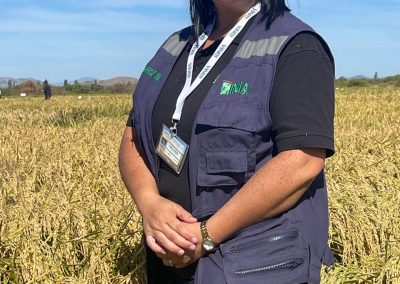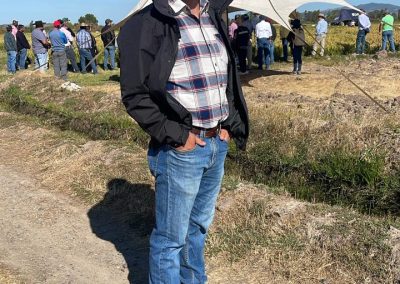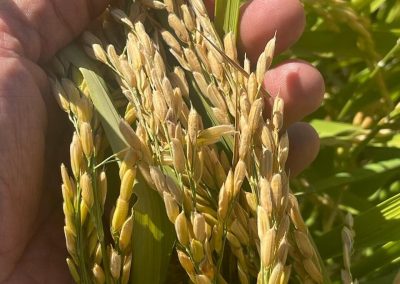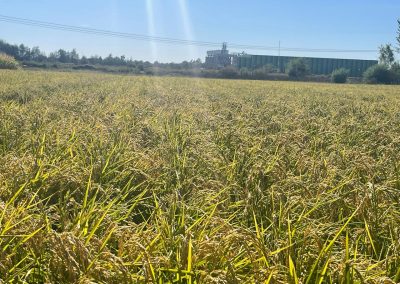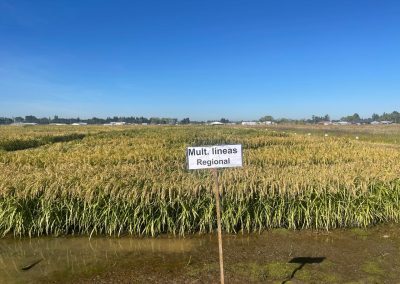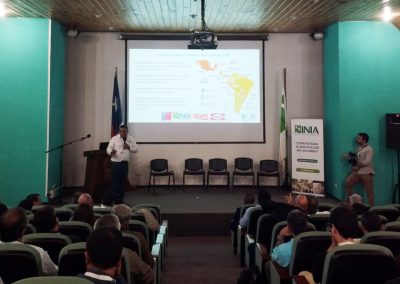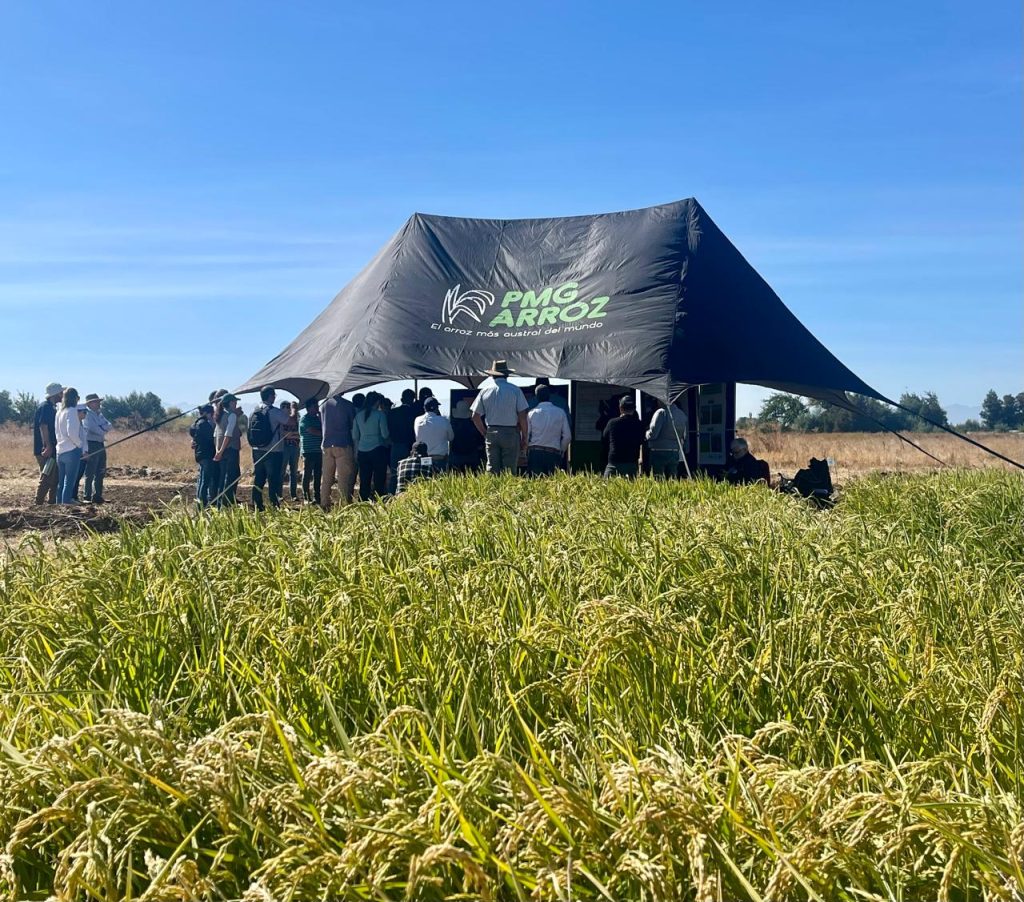
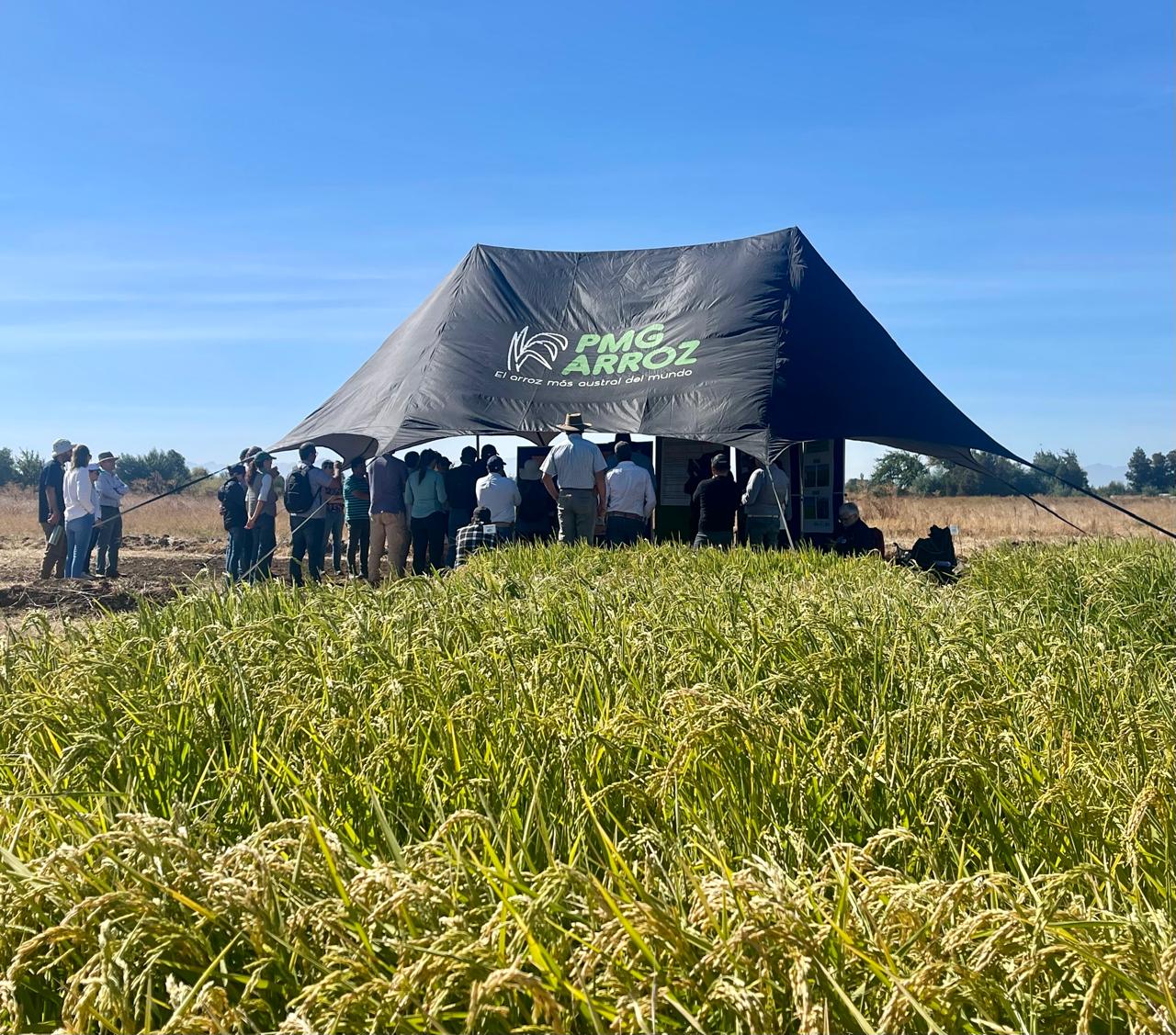
Experts from Argentina, Brazil, Chile, Ecuador, Panama, Uruguay, as well as representatives from FONTAGRO, Global Methane Hub, IICA and FLAR, met from March 11 to 13 in Chillán, Chile, to share experiences and discuss sustainable rice production and the reduction of methane emissions in Latin America.
According to Karla Cordero, researcher at the Institute of Agricultural Research (INIA) – Chile and organizer of the event, the main objective of this meeting was to learn about the strategies implemented in the participating countries for sustainable rice production, as well as to explore new forms of collaboration for the future. “We were able to learn about different approaches, such as rotations and methane gas measurement with grazing. In addition, during the field days at the INIA San Carlos and INIA Parral experimental stations, we showed Chilean rice fields where experiments are carried out with various methodologies, such as direct dry seeding and flooding, pre-germination and the innovative climate-smart rice or SRI methodology. In the latter, we are measuring methane emissions to assess the impact on emissions mitigation and water saving ,” Cordero highlighted.
One of the most relevant presentations was that of Eduardo Graterol, executive director of FLAR, who addressed the optimization of genetic improvement and process agronomy to improve productivity and sustainability in rice crops in Latin America.
Jaspe FL INIA: a perfect fit
During the field visits, a protagonist well known to FLAR was highlighted: Jaspe FL INIA, the first rice variety originated by FLAR and released by INIA Chile, designed to meet the needs of those who produce the southernmost rice in the world. Almost two years after its release, this variety has proven to be crucial to improve the sustainability of Chilean producers.
Karla Cordero explains how Jaspe FL INIA has optimized production in adverse conditions: “This variety has exceptional characteristics for our region. In an environment with a limited planting window and little water availability, this variety is a perfect fit, as it reduces the production cycle by almost 30 days, which allows greater flexibility in planting, allowing it to be established even in November. This is essential to face the rainy springs and continue producing high yields, in addition to reducing up to 50% of the water used in conventional cultivation ,” Cordero highlighted.
The benefits of Jaspe FL INIA were confirmed by producer and businessman Ramón Henríquez: “We have observed that the variety is 15 to 20 days earlier than traditional varieties, such as Zafiro. This has allowed us to save water, reduce sterility and obtain a greater amount of whole grain ”.
A promising future through collaboration
The joint work between FLAR and the Chilean rice sector has not only resulted in the release of an innovative variety, but also in the dissemination of technologies and knowledge that strengthen collaboration between institutions in the public and private sectors.
Eduardo Graterol highlighted that the sustainability approach promoted by FLAR has as its fundamental principle the agronomy of processes, which seeks to produce more rice with fewer inputs, lower costs and less environmental impact.
Ramón Henríquez shares his experience with the implementation of new technologies: “We started with the introduction of direct seeding in 50 to 100 hectares, and we quickly saw the benefits. Previously, we used the pre-germination system, which required between 20 to 24 thousand cubic meters of water per hectare. Now, with direct seeding, we use around 12 thousand cubic meters, which represents an improvement in efficiency of 40 to 50% in water use “.
This success story demonstrates how the collaboration between FLAR and its members in Chile and other countries in the region has achieved significant advances in sustainability and efficiency in rice production, opening new opportunities for the rice sector in Latin America.
“JASPE FL INIA has exceptional characteristics for our region. In an environment with a limited planting window and little water availability, this variety is a perfect fit, as it reduces the production cycle by almost 30 days… This is essential to face the rainy springs and continue producing high yields, in addition to reducing up to 50% of the water used in conventional cultivation ”
“The sustainability approach promoted by FLAR has as its fundamental principle the agronomy of processes, which seeks to produce more rice with fewer inputs, lower costs and less environmental impact”.
“We started with the introduction of direct seeding in 50 to 100 hectares, and we quickly saw the benefits. Previously, we used the pre-germination system, which required between 20 to 24 thousand cubic meters of water per hectare. Now, with direct seeding, we use around 12 thousand cubic meters, which represents an improvement in efficiency of 40 to 50% in water use“.


